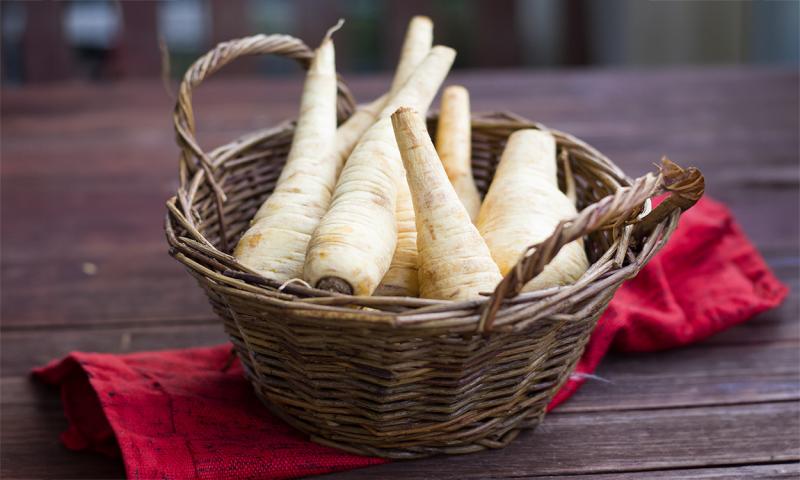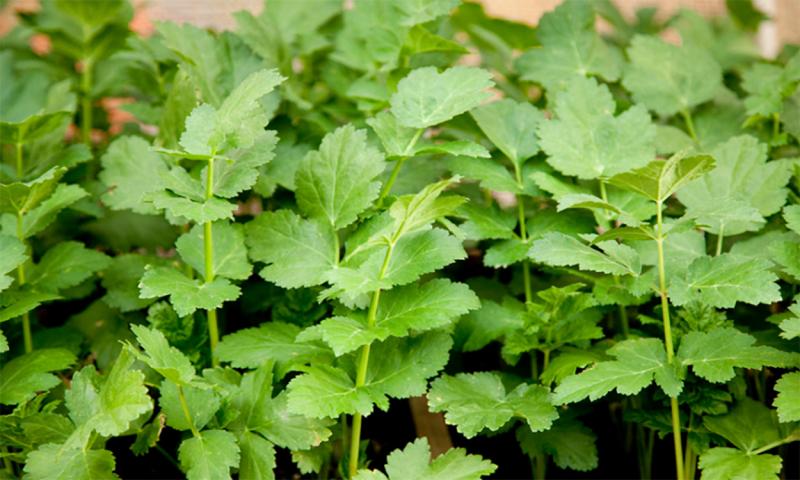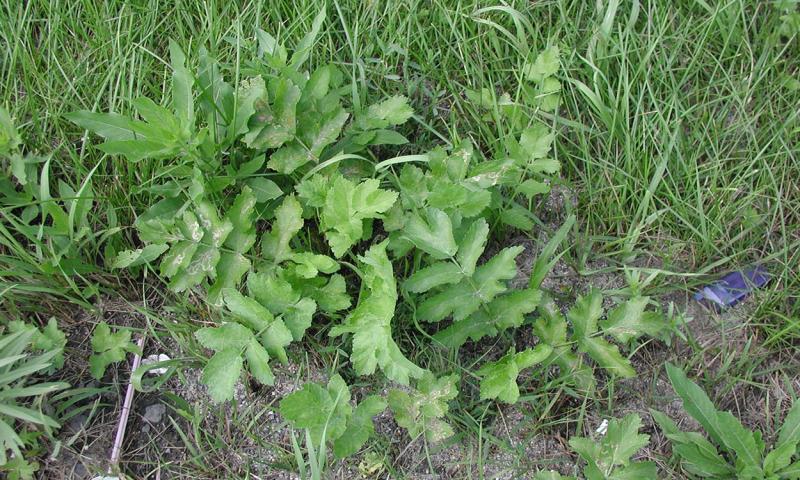Written by Rhoda Burrows, former Professor & SDSU Extension Horticulture Specialist.
Description

General Description: Parsnips (Pastinaca sativa) are one of the less-common root crops. They are related to carrots, and, in fact, their roots look like a white carrot. Their foliage looks similar to celery. Parsnips’ flavor is sweet and nutty, with notes of celery. They will be sweeter after the first frosts.
Only the tap root is edible. At one time, parsnips served not only as a staple vegetable, but they were also used for making jams and even wine because of their high sugar content. They are easy to grow, but beware: if not harvested in the first year, they will flower, produce seed, and can become a weed!
Planting
Site Selection and Preparation: Parsnips will do best in full sun. They are not fussy about soil type, as long as it is not soggy or rocky; it should be worked to at least 18 to 24 inches. A raised bed can help provide the needed depth of loosened soil, or you can plant them where potatoes were growing the previous year.
Planting: Be sure to buy fresh seed each year, as the seed does not store well. Plant seeds one-quarter to one-half inch deep. If planting in rows, seeds should be 2 to 4 inches apart, with rows 18 inches or more apart. Seeds can take two to three weeks to germinate, so you may want to interplant radishes to mark the row.

Timeline: Although the seed can germinate at 35 degrees Fahrenheit, it will germinate and grow much more quickly when the soil temperature is around 50 to 70 degrees Fahrenheit. Parsnips are a long season crop, taking 100 to 120 days to mature (Figure 2).
Plant Care

Weeding: Keep young plants free of weeds. Mulch lightly to maintain soil moisture.
Watering: Keep soil moist but not soggy, to help form well-shaped roots.
Fertilizer: For best results, test the soil for nitrogen, phosphorous, and potassium (NPK) prior to planting, and adjust the following recommendations accordingly.
- Most (but not all) existing soils in South Dakota will have enough potassium but will need nitrogen and phosphorous.
- Well-composted manure can help supply the phosphorous, or use a balanced 10-10-10 (or similar) ratio fertilizer.
- Blood meal or feather meal are good nitrogen sources, and they are relatively slow release, so they can be applied at planting and again in early summer, at a rate of about 1/4 cup per 10 feet.
- A lawn fertilizer (without herbicide) can be used if only nitrogen is required: for a typical formula of 34-0-0, apply about 2 tablespoons per 10 feet of row after the seedlings emerge, and then again about a month later.
Pests, Diseases, and Other Issues

Pests and Diseases: To reduce the risk of diseases, don’t plant parsnips in the same spot for several years. Fabric row covers can be used to exclude leafhoppers and parsnip maggots if they become an issue.
Volunteer Seeding: Parsnips are a biennial plant. If left to overwinter, they will flower, produce seeds, and can become an invasive weed (Figure 4), so be sure to harvest all the roots!
Safe Handling: Parsnip stems, flowers, leaves and seeds (every part except the roots) have a chemical in them that can cause dermatitis. This chemical can also cause the skin to become very light sensitive. When working with the plant, wear gloves and long sleeves, and make sure to wash your skin if it comes into contact with the green parts of the plant.
Harvest
Harvest Tips: Parsnips will taste better after being exposed to cold temperatures. Depending on the variety, some gardeners will leave them to overwinter under mulch and harvest them through the winter and into spring (before new growth appears). Harvest will be easier if you cut or mow the tops off before digging the roots. Be careful, as the roots bruise easily.
Storage and Preparation
Storage: Store in the refrigerator away from ethylene-producing fruits, such as apples, which can cause the parsnips to become bitter. Roots can also be stored in damp sand boxes or buckets in a cool location.
Average Yield: Ten feet of row should yield 5 to 7 pounds of parsnip roots.
Nutrition Facts: Parsnips are a good source of potassium; vitamins C, K, and folate; as well as dietary fiber. They do contain oxalates, so persons with a history of kidney stones should not consume parsnips regularly or in large quantities.
Cooking: The taproot can be eaten raw or baked, boiled, roasted, fried, grilled, or steamed. For more ideas, see our Pick it! Try it! Like it! resource for parsnips.


